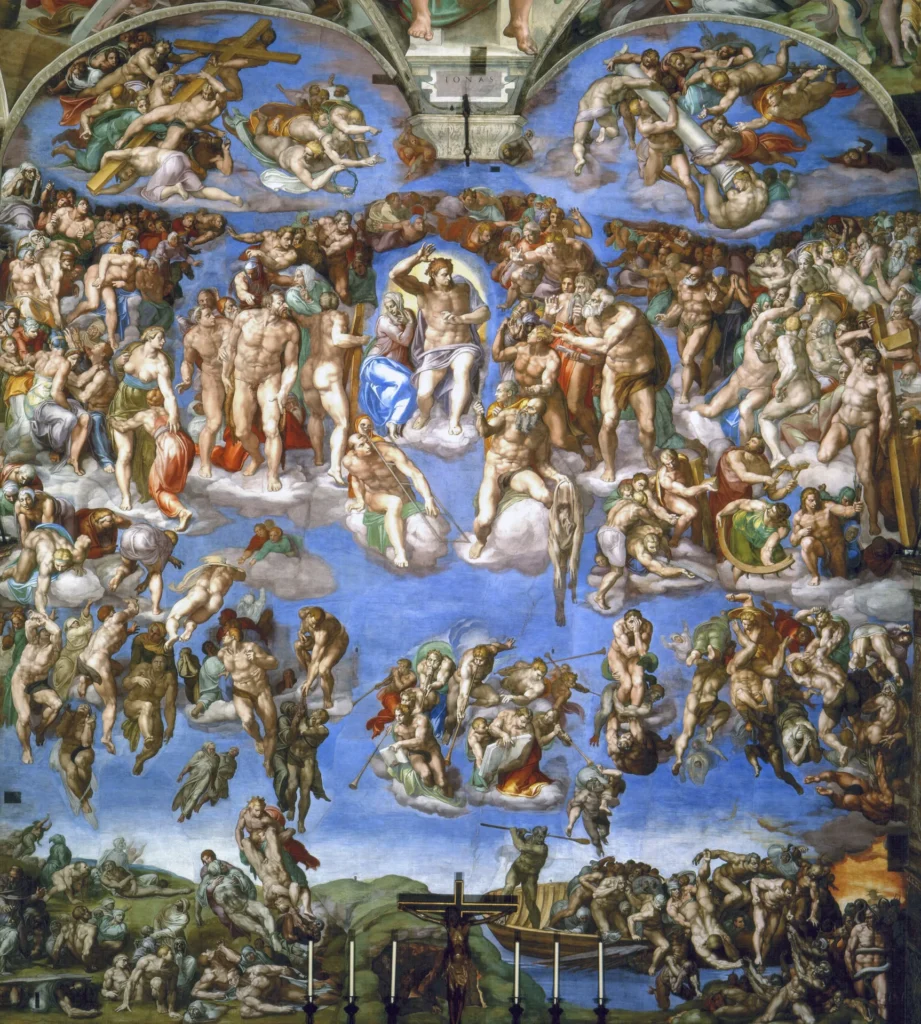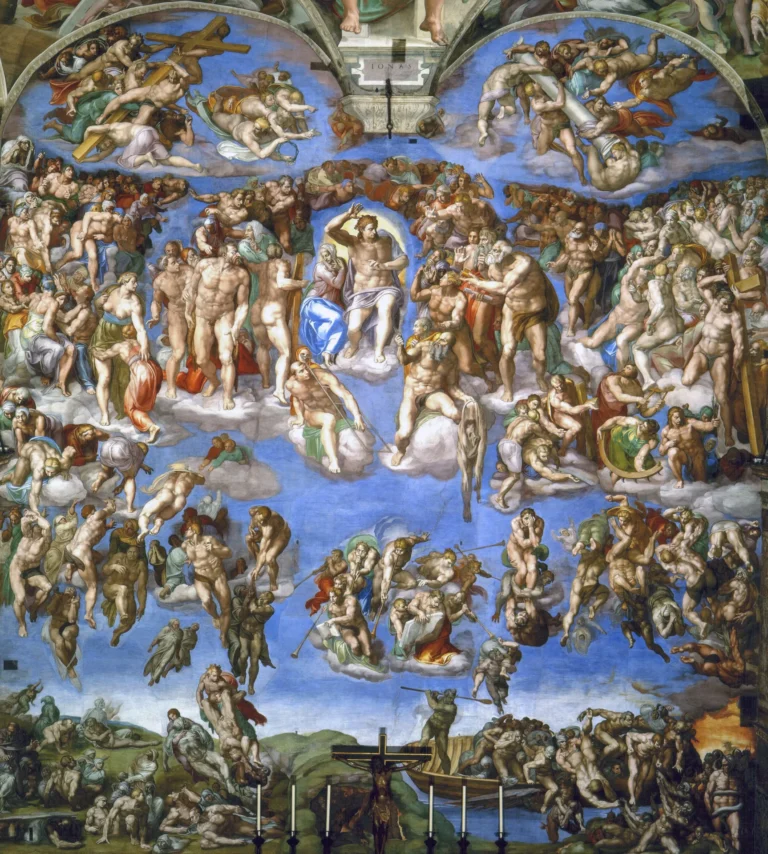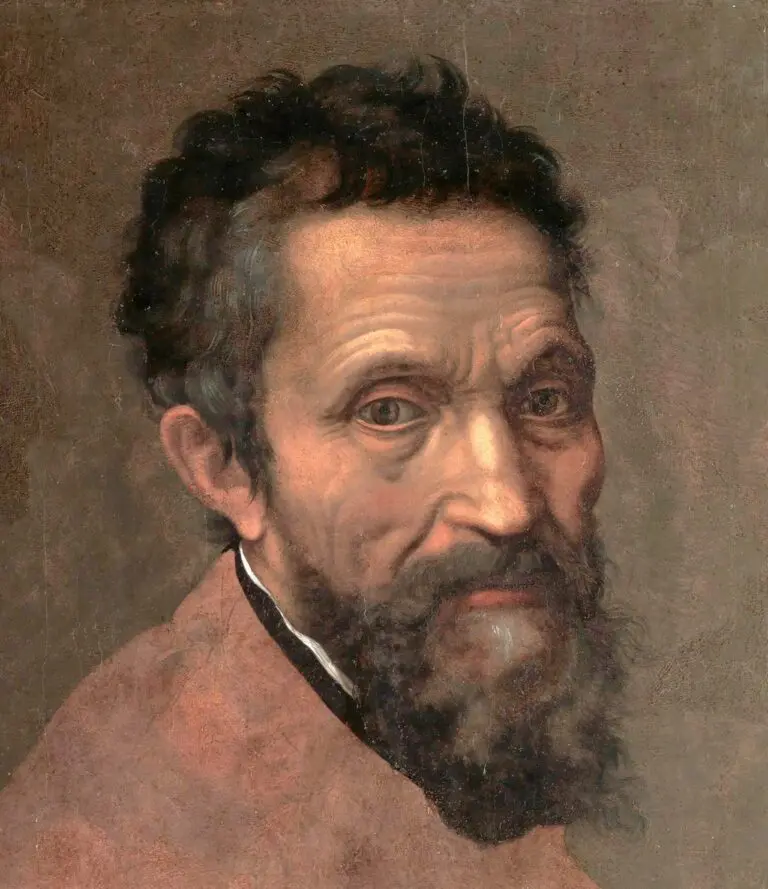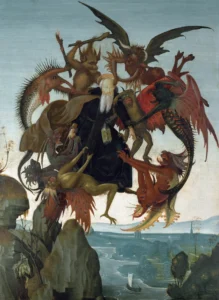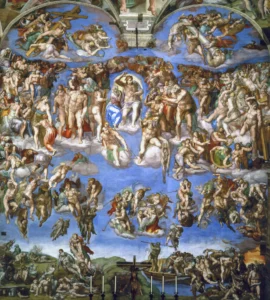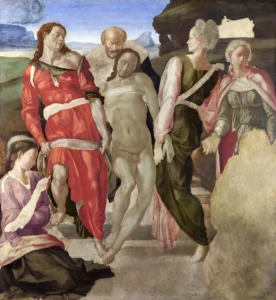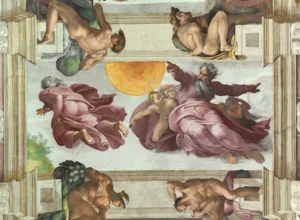The Last Judgment (1536-1541)
Michelangelo Buonarroti's monumental fresco The Last Judgment, painted on the altar wall of the Sistine Chapel, is an extraordinary depiction of the Second Coming of Christ and humanity's final judgment. Commissioned by Pope Clement VII and completed during Pope Paul III's reign, this work is renowned for its innovative composition, featuring over 300 figures engaged in dynamic poses. The dramatic portrayal of salvation and damnation not only reflects the artist's mastery of the human form but also serves as a powerful commentary on the spiritual climate of 16th-century Rome, particularly in response to the Protestant Reformation.
1536 - 1541
About the Artwork
Commissioned by Pope Clement VII and completed under Pope Paul III, The Last Judgment was created from 1536 to 1541 as a radical reinterpretation of the last days of humanity. Michelangelo’s work incorporates influences from Dante's 'The Divine Comedy', showcasing over 300 figures in a sweeping composition that diverges from traditional depictions of heaven and hell. Centered around Christ, the fresco's powerful visual language explores themes of resurrection, salvation, and damnation. Despite facing controversy for its nudity, the work remains a profound exploration of the human experience in relation to divinity. Its restoration from 1980 to 1994 further solidified its status, making it one of the enduring masterpieces of Renaissance art.
Did You Know
Michelangelo included his self-portrait in the fresco as St. Bartholomew, who is depicted holding his own flayed skin, a poignant symbol of suffering. This daring choice reflects the artist’s personal struggles and creates a profound connection between the viewer and the depicted theology.
Created during a time of significant religious upheaval, The Last Judgment was intended to reaffirm Catholic beliefs and counteract the growing influence of Protestantism, reminding believers of the importance of repentance and the finality of divine judgment.
The extensive nudity depicted in The Last Judgment sparked controversy, leading to public criticism and eventual censorship. Daniele da Volterra was commissioned to cover several figures with drapery, resulting in an ongoing debate about artistic freedom and moral standards in religious art.




